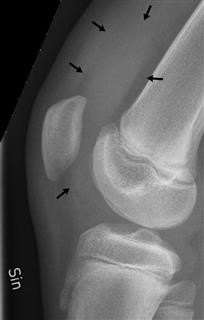The Infertility Org
Infertility Related Questions
You found the best source for total information and resources for Infertility Related Questions on the web.
Similarly, there is no need for testing tubal patency for couples who will require IVF or ICSI procedure. If the sperm do not have the right shape, or they cannot travel rapidly and accurately towards the egg, conception may be difficult. An ultrasonography unit and an endocrine laboratory capable of performing daily determinations of E2, FSH, and LH are necessary. [186, 187, 188, 189] Multiple adverse effects and complications may occur during the use of the gonadotropins, including (1) multiple pregnancy (24-33%), (2) ectopic pregnancy (5-8%), (3) miscarriages (15-21%), (4) ovarian torsion and rupture, and (5) ovarian hyperstimulation syndrome, which is the most severe. [190, 191] Whittemore et al, using a large combined data set derived from case-controlled studies in the United States, showed that the increase of ovarian cancer associated with infertility might be due to the use of fertility drugs. [192] Ovarian hyperstimulation syndrome is an iatrogenic condition that occurs in patients undergoing ovulation induction with hMG or controlled ovarian hyperstimulation (COH) for assisted reproductive technologies. Women who are at risk, including those on a vegan diet, should ask the doctor about supplements.
Undescended testicle may be isolated or may be observed as part of a syndrome such as prune belly syndrome. Erectile Disfunction (ED): Also known as impotence, this condition is common and affects 20 million American men. ED is the result of a single, or more commonly a combination of multiple factors. In the past, ED was thought to be the result of psychological problems, but new research indicates that 90 percent of cases are organic in nature. However, most men who suffer from ED have a secondary psychological problem that can worsen the situation like performance anxiety, guilt, and low self-esteem. Many of the common causes of impotence include: diabetes, high blood pressure, heart and vascular disease, stress, hormone problems, pelvic surgery, trauma, venous leak, and the side effects of frequently prescribed medications (i.e. Many more couples, however, experience involuntary childlessness for at least one year: estimates range from 12% to 28%.[4] Male infertility is responsible for 20–30% of infertility cases, while 20–35% are due to female infertility, and 25–40% are due to combined problems in both parts.[2][5] In 10–20% of cases, no cause is found.[5] The most common cause of female infertility is ovulatory problems, which generally manifest themselves by sparse or absent menstrual periods.[6] Male infertility is most commonly due to deficiencies in the semen, and semen quality is used as a surrogate measure of male fecundity.[7] Women who are fertile experience a natural period of fertility before and during ovulation, and they are naturally infertile for the rest of the menstrual cycle. Showell MG, Brown J, Yazdani A, Stankiewicz MT, Hart RJ.
A lot more Resources For Infertility Treatment Home Remedy

Right here are Some More Information on Infertility Issues After Depo Shot
It is more successful in women who have previously been pregnant. Ovary Transplantation for Fertility Preservation in Cancer Patients: Fresh and Frozen. (PDF, 1 MB) Chapter 42 from textbook Clinial Infertility, 2010.
Much more Resources For Infertility Issues After Depo Shot
It does not induce ovulation, but reduces the production of prolactin by the pituitary.[20] Bromocriptine is only prescribed in cases of overproduction of prolactin (hyperprolactinemia). They include: Clomifene (Clomid, Serophene): This encourages ovulation in those who ovulate either irregularly or not at all, because of PCOS or another disorder.
Even more Details Around Infertility Related Questions
Ovulation should be documented by serum progesterone level measurement at cycle day 21. Many more couples, however, experience involuntary childlessness for at least one year: estimates range from 12% to 28%.[4] Male infertility is responsible for 20–30% of infertility cases, while 20–35% are due to female infertility, and 25–40% are due to combined problems in both parts.[2][5] In 10–20% of cases, no cause is found.[5] The most common cause of female infertility is ovulatory problems, which generally manifest themselves by sparse or absent menstrual periods.[6] Male infertility is most commonly due to deficiencies in the semen, and semen quality is used as a surrogate measure of male fecundity.[7] Women who are fertile experience a natural period of fertility before and during ovulation, and they are naturally infertile for the rest of the menstrual cycle. Causes include: Surgery: Pelvic surgery can sometimes cause scarring or damage to the fallopian tubes. This page covers the possible causes of infertility in men and women. If there is a history of recurrent miscarriages (2 or more) a lupus anticoagulant (LAC) and anti-cardiolipin antibody (ACL) are often done, as well as other tests. Moderate ovarian hyperstimulation syndrome is characterized by ovarian enlargement (5-12 cm in diameter) moderate ascites, nausea, vomiting, abdominal discomfort, and weight gain greater than 10 lb. 8 Intrauterine insemination and ovulation induction do not result in increased pregnancy rates in women with unexplained infertility. Vasectomy Reversal. (PDF, 733 KB) The New England Journal of Medicine, 1977.
Previous Next
See also
Infertility Test Image
Infertility With Hypothyroid
Infertility Treatment Ethical Issues